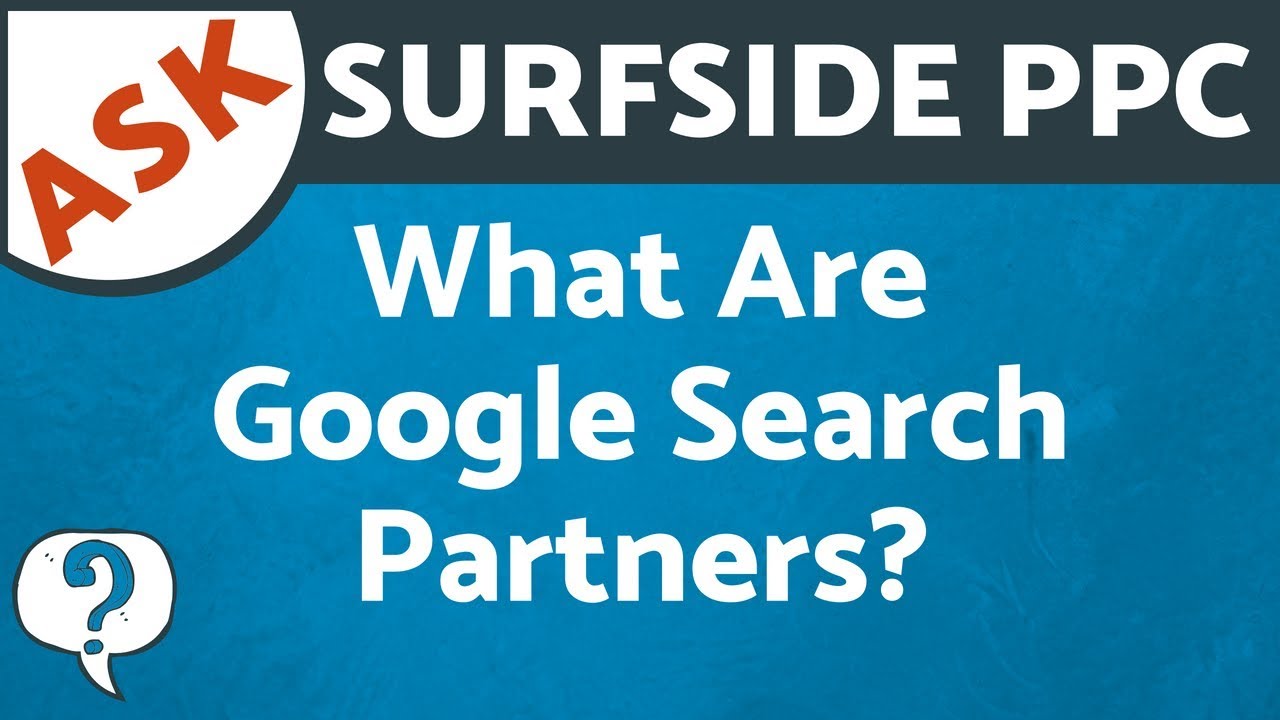Have you ever wondered what websites are included in Google’s SearchNetwork? We all know about Google’s search engine, but did you know they also have a vast network of partner websites?
YouTube is one of them, along with countless other non-Google sites that utilize Google’s Custom Search Engine. These partners play a crucial role in expanding Google’s reach and providing users with diverse search results.
However, despite their importance, Google doesn’t provide a definitive list of these search partners. In this article, we will delve into the mysterious world of Google’s Search Network and explore the possibilities hidden behind the scenes.
Table of Contents
- google search network partners list
- Introduction To Google Search Network Partners
- Extending Reach Of Ads Through Search Partners
- Ad Placement On Search Results, Directories, And Partner Sites
- Google’s Non-Definitive List Of Search Partners
- Understanding Google’s Network: Search Network Vs. Display Network
- Google Core Sites Vs. Non-Google Sites In The Search Network
- Recognized Search Partners: YouTube, Amazon.com, The New York Times, The Guardian, W3Schools
- Benefits Of Including Search Partners In Campaigns
- Importance Of Testing And Analyzing Results
- Lack Of Specific Data On The “Google Search Network Partners List”
google search network partners list
The Google Search Network Partners List includes a wide range of websites that partner with Google for ads and product listings. These search partners extend the reach of ads to non-Google websites, including YouTube.
Ads can appear on search results, directory pages, and relevant partner sites. While Google does not provide a definitive list of search partners, some notable ones include YouTube, Amazon.com, The New York Times, The Guardian, and W3Schools.
Including search partners in campaigns can provide better insights on keyword use, and testing and analyzing results is key for making informed decisions.Key Points:
- Google Search Network Partners List includes various websites partnering with Google for ads and product listings
- Search partners expand ad reach beyond Google websites, including YouTube
- Ads can be displayed on search results, directory pages, and relevant partner sites
- Notable search partners include YouTube, Amazon.com, The New York Times, The Guardian, and W3Schools
- Utilizing search partners in campaigns can provide valuable insights on keyword usage
- Testing and analyzing results is crucial for making informed decisions with search partner ads.
Sources
https://www.twinword.com/blog/adwords-google-search-partners-list/
https://support.google.com/google-ads/answer/2616017?hl=en
https://www.searchenginejournal.com/google-search-partners/299681/
https://directiveconsulting.com/blog/google-search-partners/
Check this out:
💡 Pro Tips:
1. Use Google Analytics to identify which search partners are driving the most traffic to your website. This can help you prioritize and optimize your ad campaigns accordingly.
2. Continuously refine your keyword targeting to ensure your ads are reaching the most relevant audience on search partner websites. Experiment with different keywords and monitor their performance to find the optimal mix.
3. Consider excluding certain search partners from your campaigns if they consistently underperform or are not aligned with your target audience. This can help you allocate your budget more effectively and focus on the most valuable partnerships.
4. Take advantage of ad extensions, such as sitelink extensions and call extensions, to maximize the performance of your ads on search partner websites. These extensions can provide additional information and opportunities for engagement with your potential customers.
5. Regularly review your campaign metrics to identify trends and patterns in performance on search partner websites. Adjust your bidding strategy or ad copy accordingly to capitalize on successful partnerships and improve results.
Introduction To Google Search Network Partners
Google Search Network Partners are a vital component of Google’s advertising network. The Search Network includes various websites that have partnered with Google to display ads and product listings.
By collaborating with these partners, advertisers can extend the reach of their ads to a wider audience, beyond Google’s core sites. This can open up new opportunities for businesses to connect with potential customers and drive conversions.
Extending Reach Of Ads Through Search Partners
One of the key advantages of utilizing search partners is the ability to expand the reach of ads to non-Google websites. These websites can include popular platforms such as YouTube, where ads can be displayed alongside relevant content.
This provides advertisers with the opportunity to engage with users who may not actively use Google’s search engine but still visit partner sites.
Key Information:
– Search partners allow ads to reach non-Google websites. – YouTube is one of the prominent search partners.
Ad Placement On Search Results, Directories, And Partner Sites
When ads are displayed through search partners, they can appear in various locations, including search results, directory pages, and relevant partner sites. This wide range of placements ensures that ads are shown to users when they are actively searching or browsing content related to the advertiser’s offerings.
This increases the chances of reaching users who are genuinely interested in the product or service being promoted.
Google’s Non-Definitive List Of Search Partners
One challenge for advertisers is that Google does not provide a definitive list of search partners. However, some well-known search partners include YouTube, Amazon.com, The New York Times, The Guardian, and W3Schools.
These partners are highly reputable and attract large audiences, making them valuable platforms for advertisers to consider.
Understanding Google’s Network: Search Network Vs. Display Network
Google’s advertising network is divided into two main categories: the Search Network and the Display Network.
The Search Network primarily includes Google’s core sites, such as the search engine itself, Google Maps, and Google Shopping. On the other hand, the Display Network consists of a wide range of websites, apps, and video content providers where ads can be displayed.
Google Core Sites Vs. Non-Google Sites In The Search Network
Within the Search Network, there is a distinction between Google’s core sites and non-Google sites that utilize Google’s Custom Search Engine.
Google’s core sites primarily include its own platforms, while non-Google sites make use of Google’s infrastructure for their own search functionality. This differentiation helps advertisers understand the various channels through which their ads can be displayed within the Search Network.
Recognized Search Partners: YouTube, Amazon.com, The New York Times, The Guardian, W3Schools
While Google does not provide an exhaustive list of search partners, several prominent partners have been recognized. These include YouTube, the world’s largest video sharing platform, Amazon.com, the leading online marketplace, The New York Times and The Guardian, well-known news organizations, and W3Schools, a popular educational resource for web development.
Benefits Of Including Search Partners In Campaigns
Including search partners in advertising campaigns can offer several benefits to advertisers. Firstly, it allows for the expansion of the audience reach, potentially exposing ads to a wider range of users who may not actively use Google’s search engine.
Secondly, including search partners can provide valuable insights into keyword usage and performance, enhancing the advertiser’s ability to optimize their campaigns and improve targeting.
Importance Of Testing And Analyzing Results
To make informed decisions about including search partners in campaigns, it is crucial for advertisers to conduct testing and analyze the results. This involves monitoring the performance of ads across different partner sites, comparing it to performance on Google’s core sites, and determining the impact on key metrics such as click-through rates and conversions.
New insights from FroggyAds platform analytics.
Testing and analyzing results allow advertisers to fine-tune their campaigns and allocate resources effectively.
Lack Of Specific Data On The “Google Search Network Partners List”
Despite the many advantages of leveraging search partners, one limitation is the lack of specific data or figures on the exact “Google Search Network Partners List.” Google does not disclose a comprehensive list of all its search partners, making it challenging for advertisers to have a complete overview. However, the recognition of well-established partners and the inclusion of various websites within the Search Network provide enough evidence of the extensive reach and potential impact of these partnerships.
In conclusion, Google Search Network Partners play a significant role in expanding the reach of ads and product listings beyond Google’s core sites. By including search partners in campaigns, advertisers can tap into a wider audience and gain valuable insights into keyword performance.
Although Google does not provide a definitive list of search partners, recognized partners such as YouTube, Amazon.com, The New York Times, The Guardian, and W3Schools offer significant potential for advertisers. It is crucial to test and analyze results and make informed decisions based on performance metrics to unlock the marketing potential of Google Search Network Partners.
Buy Traffic • Programmatic Advertising • Self-Serve DSP Platform • Performance Marketing Tips • Native Ad Network












